This is basically a brief travelogue, based on our holiday trip to visit Adriana’s family in Guadalajara. After New Year’s we went to visit one sister in Ciudad Guzman, and another in Colima. Today’s photo essay is from Ciudad Guzman, which I’d only heard bad things about before we went. People in both Guadalajara and Colima tend to speak very disparagingly about C. Guzman, making it sound like some kind of hellhole. But let me say for the record, quoting my sister-in-law Celia: Guzman rocks!
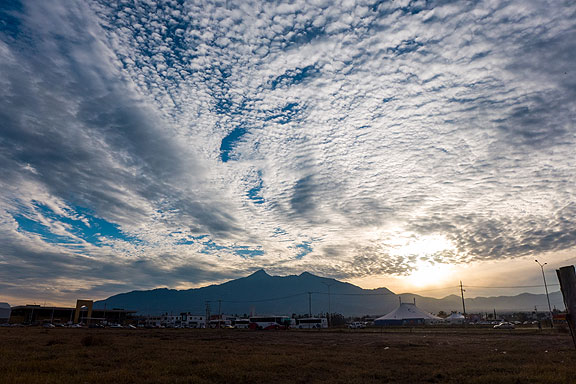
We enjoyed this amazing sunset over the Nevado de Colima, which you can see pretty clearly here is a long dormant volcano, last explosion 220,000 years ago. In the foreground buses at the local station, and a tiny circus tent.
We stayed with Celia and Andres at their Hotel Fuerte Real, a brand new, spotlessly maintained place a short distance from the historic train station. They will soon be building their new home in a nearby neighborhood, but for now they’re living in the hotel too. We were very comfortable there. On our second morning as we strolled across the parking lot to have breakfast we looked at the sky and saw a very weird cloud. I wish I’d taken a photo, but it was dense, dark gray, shaped like a christmas tree on its side, and we just shrugged it off as an anomaly (even though one of the hotel’s maids was standing and staring at it too). After breakfast we went back to the room and were covered in light ash falling, almost like a snowfall. The cloud had been belched out by the Volcán de Colima, a very active volcano which I will post photos of in the next entry.
Celia gave us a great tour on our arrival, first taking us to see the Laguna de Zapotlan, an impressively large freshwater lake that fills a corner of the sprawling agricultural valley. One of our strongest feelings after visiting was a sense of urgency that some good urban planners and motivated eco-activists would band together to make intelligent greenbelts and delimit the urbanization process before it overruns this beautiful valley.
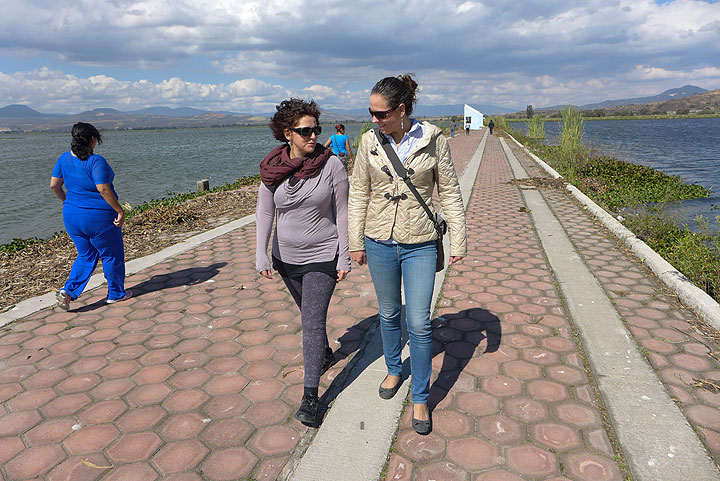
This is a causeway built to accommodate rowing events on the Laguna de Zapotlan in the recently held Panamerican Games.
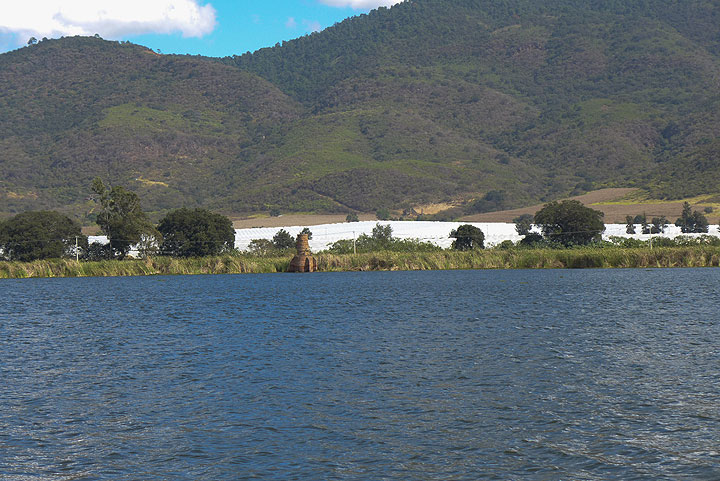
Not far off the edge of the lake are some of the hothouses that are replacing the traditional corn-and-cattle economy with a berry and avocado export agriculture.
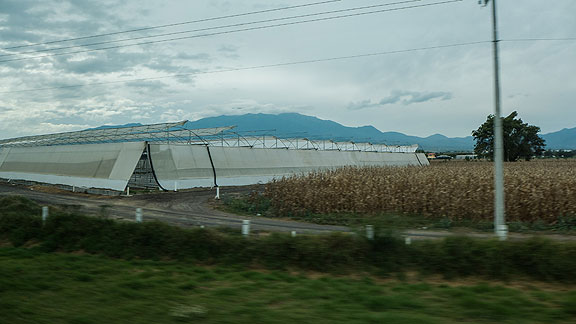
Here’s a better view of the ubiquitous hothouses, mostly for berries but some are also for tomatoes.
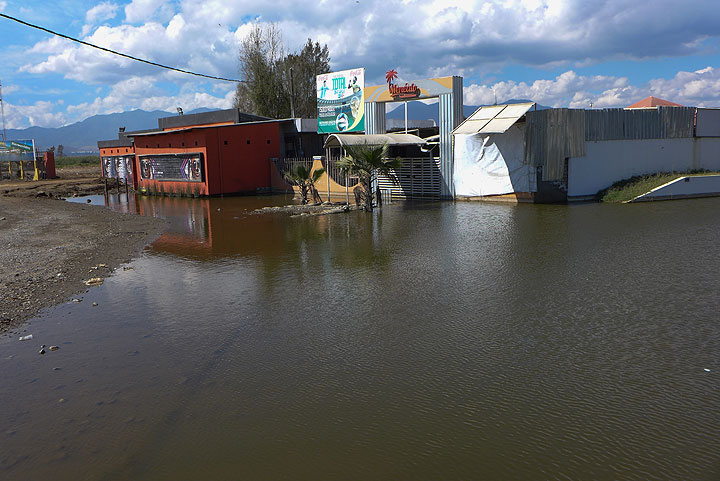
These businesses are indundated in their lakeside locales. The lake has recently been rising, but we weren’t sure why.
Ciudad Guzman is not particularly distinguished for its architecture. But the center does have a nice harmony with the classic arcades of its buildings.
Anyway, one of the highlights of our visit to Ciudad Guzman was a long arduous ride up to the top of the Nevado de Colima, the pointy peak which makes up one part of the original rim of the caldera. Everyone in Guzman seems to treat the Nevado as a mountain in its own right, and don’t really describe it as part of the old volcano. Our hope in climbing up to the “antennas” was to see the active volcano another 40-50 miles southwest, but when we arrived at the top of our hike, well above 13,000 feet where the air is thin, the views were completely blocked by dense clouds. Here are some images of our trip up to the top.
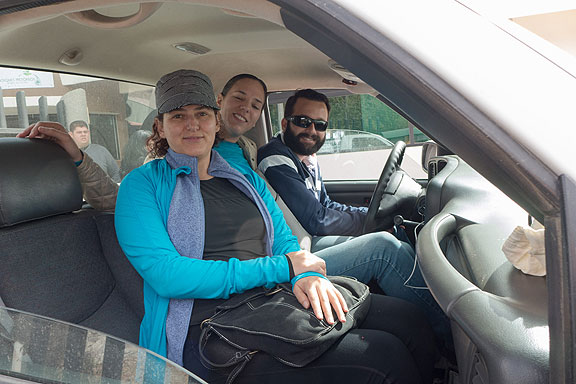
We squeezed into their 4-wheel drive for a rough ride into the Nevado de Colima National Park, which is a very rutted dirt road most of the way.
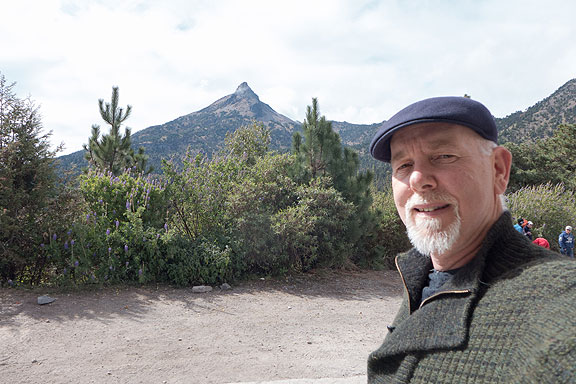
We paused to take a photo of the Nevado, still far above us at this point, but it was getting chilly. Our actual destination is the ridge behind my hat in this photo.
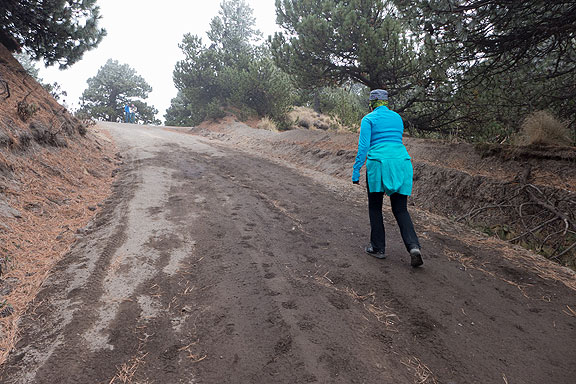
After we got to the end of the road we had to walk an hour to get to the top. It was cold, windy, steep, and lots of frost was forming on the pine needles around us.
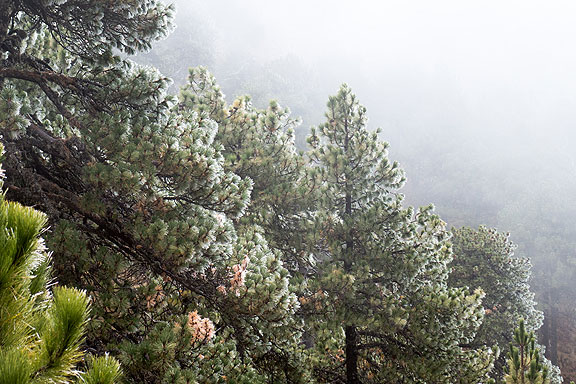
It was wild to be so high up, hoping for a view of a volcano, but instead being almost lost in an incoming fog with cold wet wind.
The next day, Celia took us to the other side of town, up the hills on the other side of the valley. There we had spectacular views back at where we’d been climbing the day before. Ciudad Guzman has smartly made beautiful municipal parks on the hills overlooking their city. In the steep trails up the hills there are massive volcanic boulders, which seemed obvious to us they had been hurled across the valley when the Nevado had blown up so many centuries ago. If only the city leaders had the vision to limit their urban growth now, while the valley is still so beautiful, the parks are so well maintained, and life is pretty nice. It seems likely that, as Ciudad Guzman is on the main road between Guadalajara (Mexico’s 2nd largest city) and Manzanillo (North America’s largest west coast container port), it will be under great pressure to grow, to accommodate Walmart and Costco, and ultimately lose a lot of what makes it so special right now.
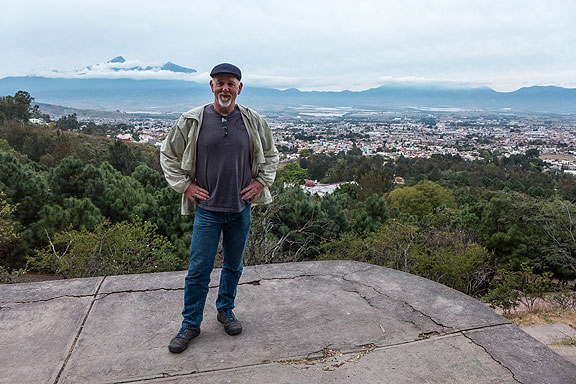
This is part of the way up the park’s hillside above Ciudad Guzman, with the Nevado de Colima visible across the valley behind me, partly enshrouded with clouds.
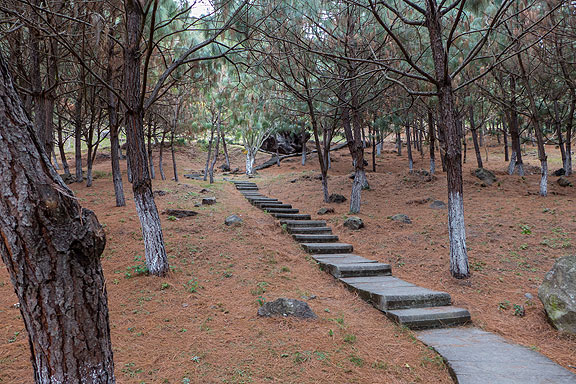
This is the path through the Parque Ecologico las Penas in Ciudad Guzman, leading up to the big volcanic boulders we climbed.
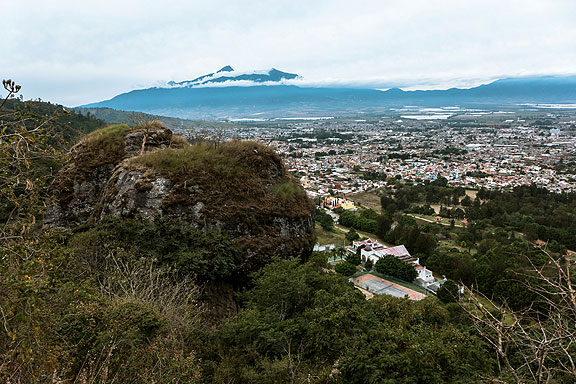
The long view across Ciudad Guzman. Where the city ends, the hothouses begin (for now)… Nevado de Colima in distance.
Another thing that Ciudad Guzman is doing well is paying some attention to its own history. Several of its more venerable structures have historic photos installed in front of them, including this lovely train station, now sandwiched between a big gas station and a big suburban style cinema.
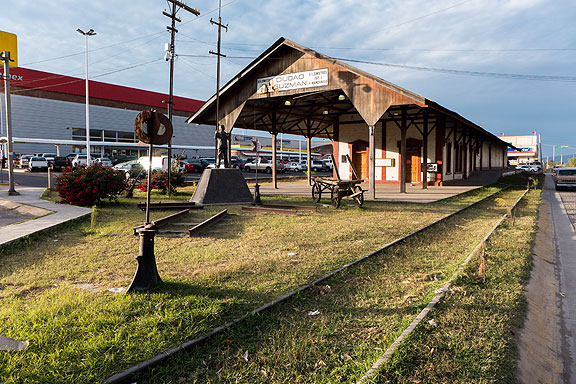
This is the old train station that Adriana’s father has childhood memories of arriving at, and having to walk into town because he didn’t have the fare for the streetcar.
We went 20 miles up the road to Sayula to have a great meal, and also to buy knives from the historic Ojeda factory.
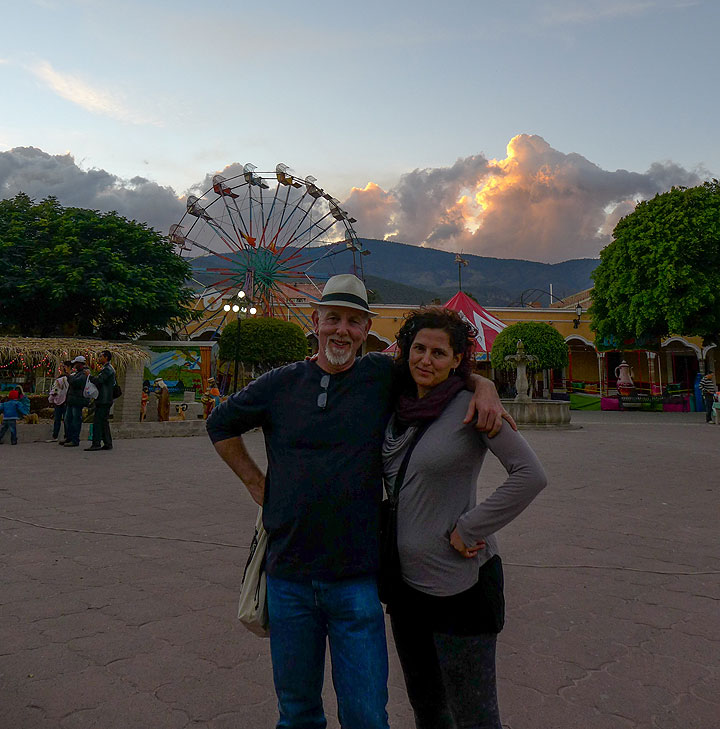
Sunset in the zocolo of Sayula, a town 20 miles outside of Ciudad Guzman best known for its many small, family-run knife making businesses.
We got to see Andres and Celia’s future home too.
And since it was Christmas, strange trees were installed in public plazas. Here are three I snapped:

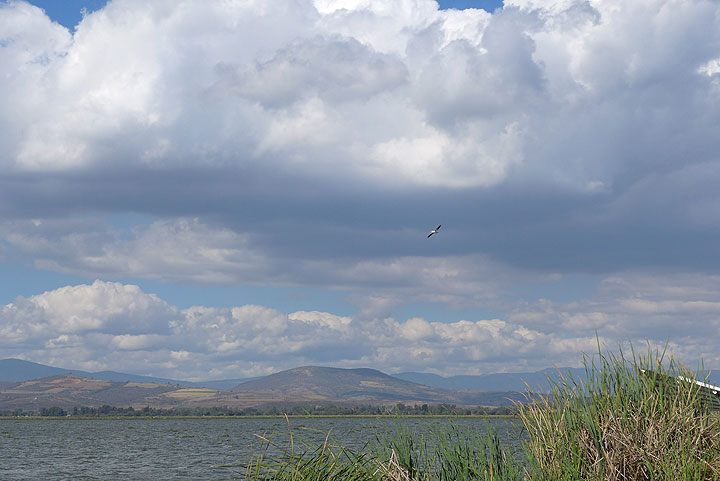
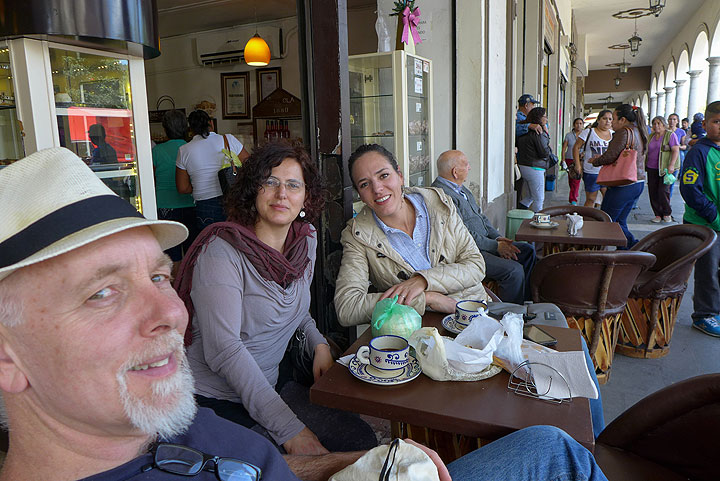
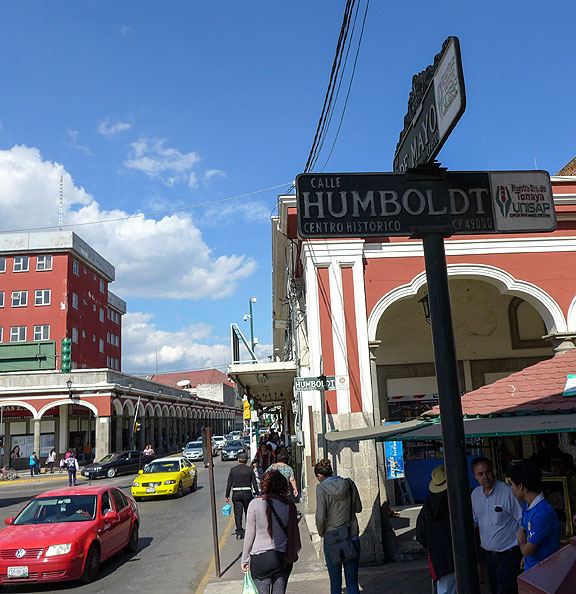
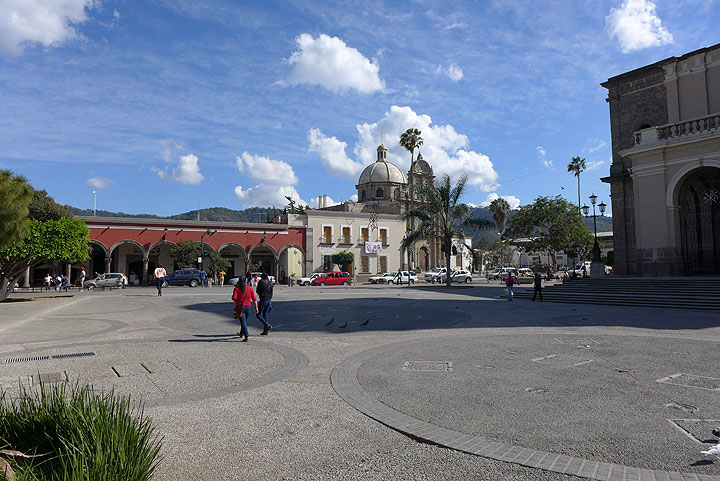
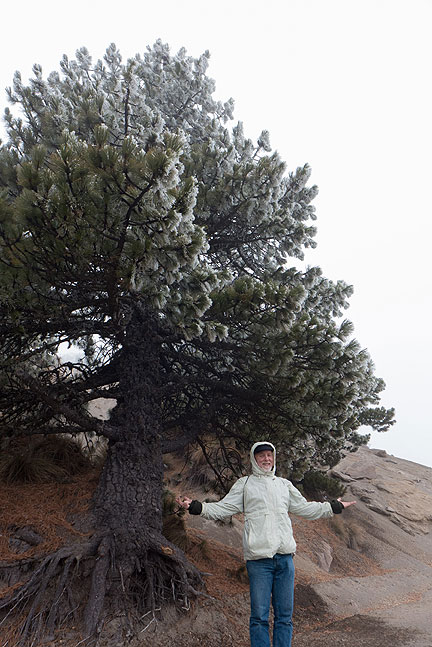
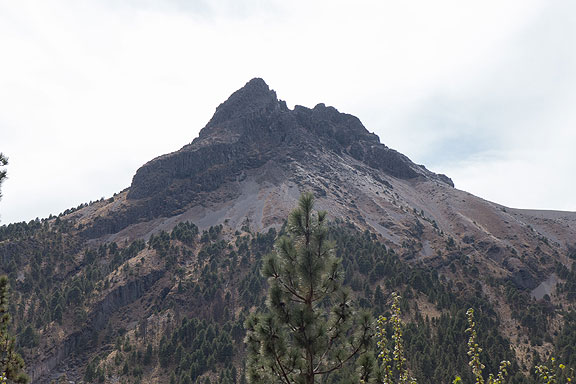
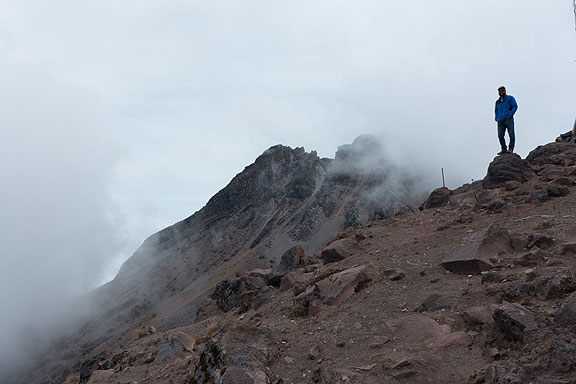
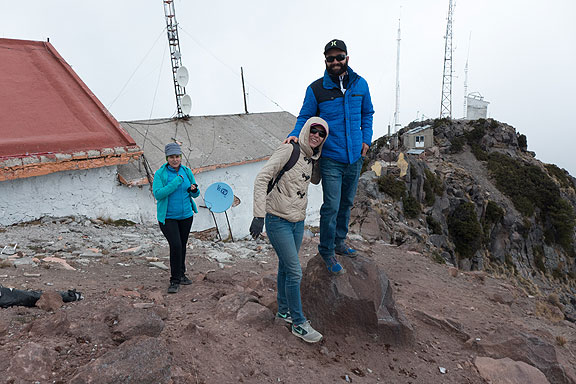
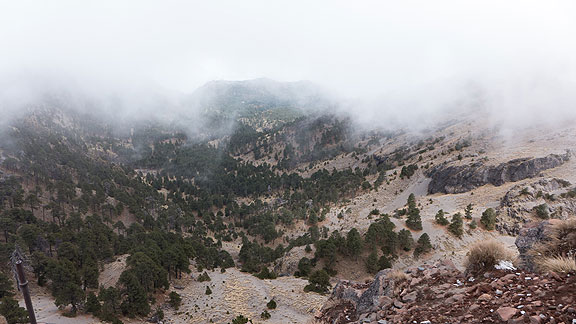
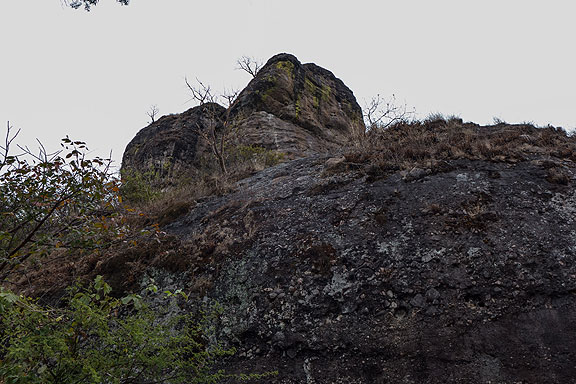
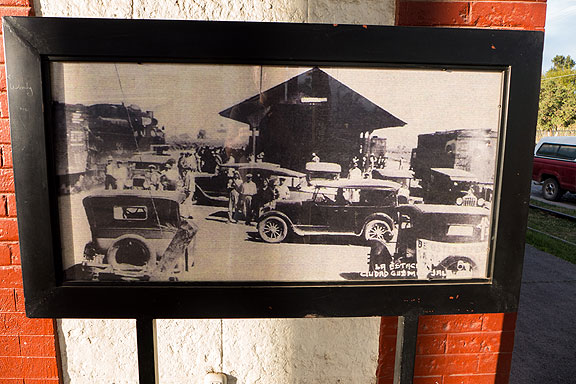
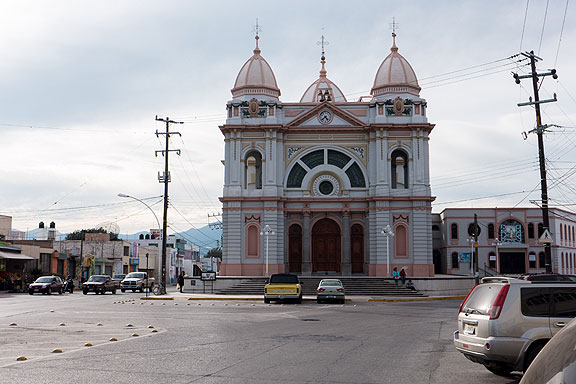
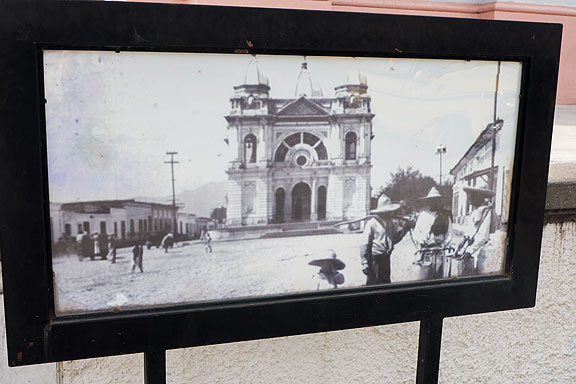
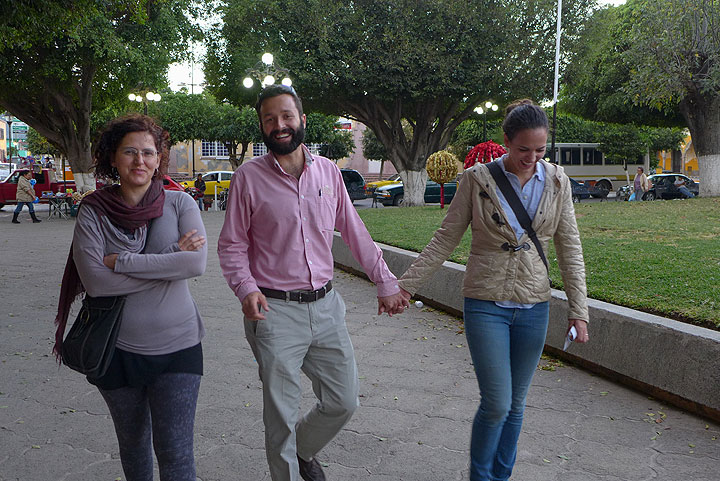
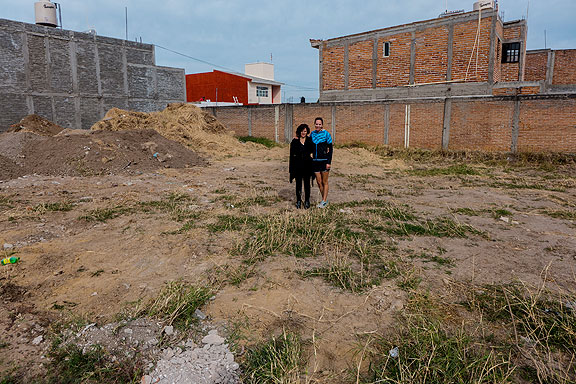
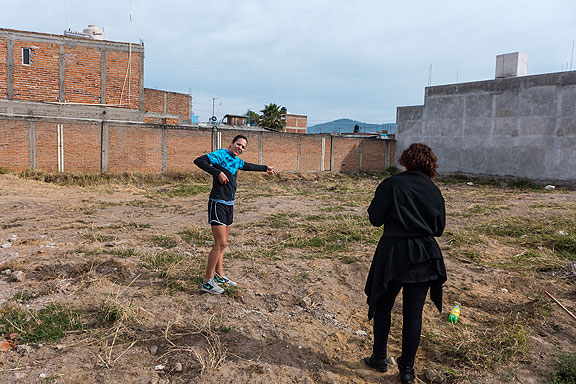
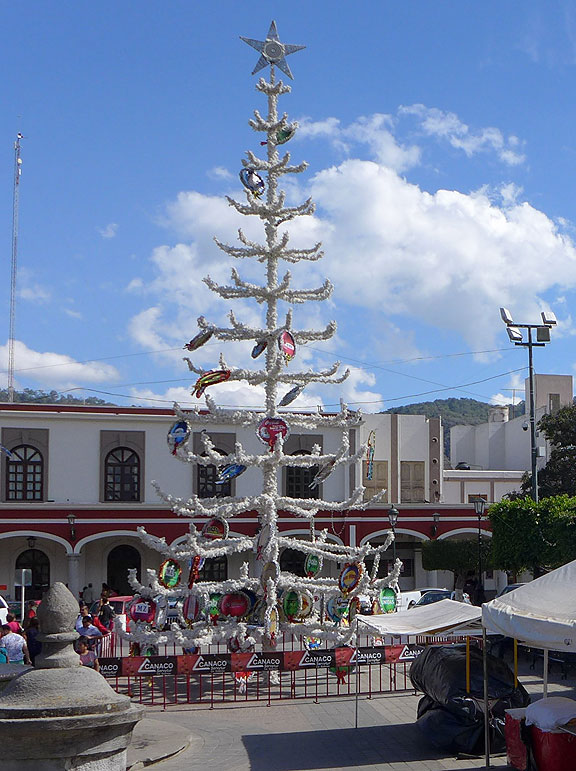
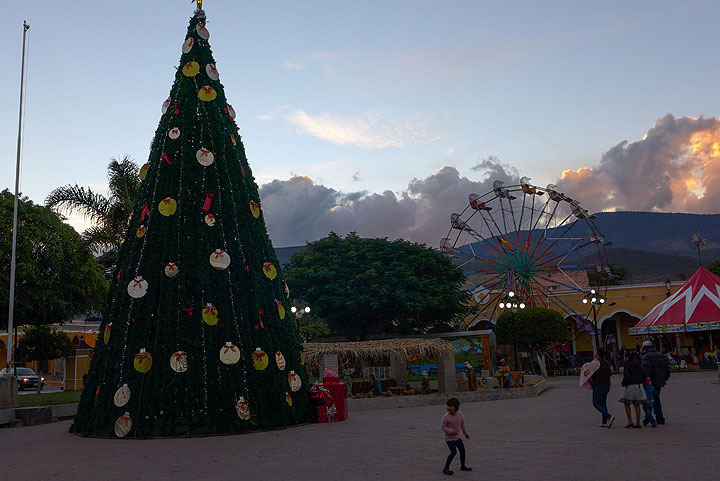
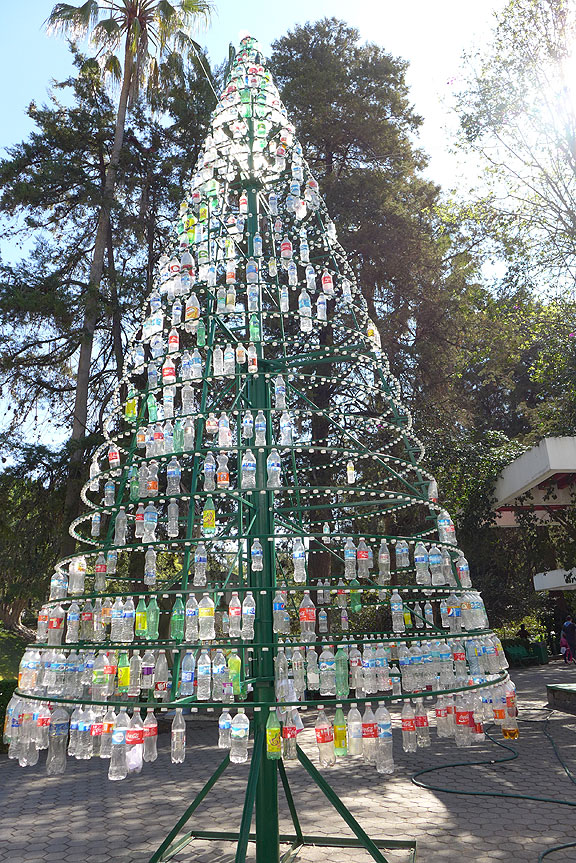











Yes, just a very old city with a lot of tradition. I recently visited Guadalajara and with the exception of a few places, the city has extended in the most aesthetically unpleasing way. Zapotlan, I hope will keep much of its charm. I lived there for 2 years during the late 80’s. I’m sure much has changed since then.
I am very glad to see my town. It is true that our city is not very well knowed and I love that. Tourism is the worst think you can wish! Tourism destroys everything even the social community intimacy and traditions (Acapulco, Pto Vallarta, Cancun, etc). When my Québec friends comme here they told me that Zapotlan was one of the best places that they had visited in Mexico, I was skeptical about. Zapotlan Lagoon is a RAMSAR site.